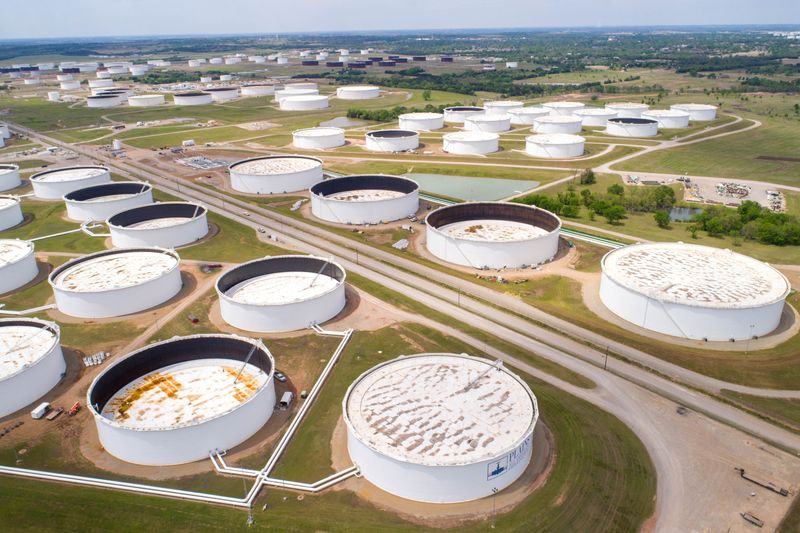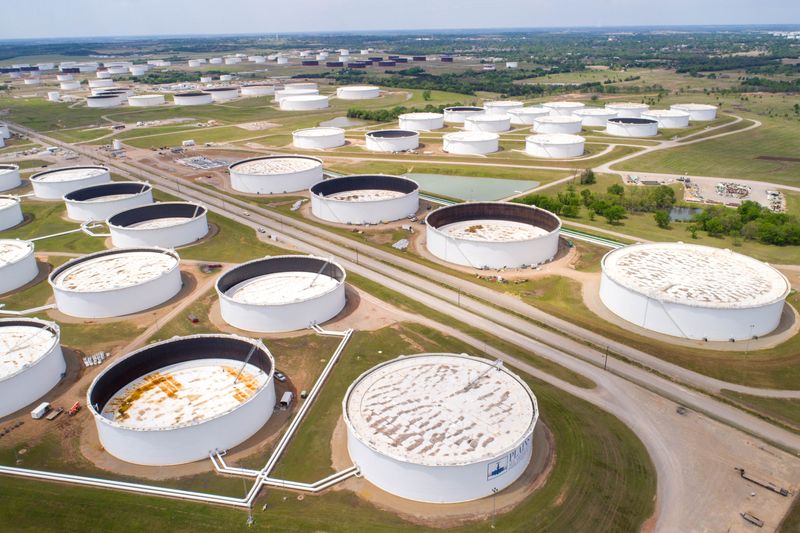Commodities
Oil prices steady above $90 as investors assess Israel-Hamas war


© Reuters. FILE PHOTO: Crude oil storage tanks are seen in an aerial photograph at the Cushing oil hub in Cushing, Oklahoma, U.S. April 21, 2020. REUTERS/Drone Base/File Photo
By Robert Harvey
LONDON (Reuters) – steadied above $90 a barrel on Monday after topping that level on Friday, as investors waited to see if the Israel-Hamas conflict escalates further.
Brent futures were down 4 cents, or 0.04%, at $90.85 a barrel at 1120 GMT. U.S. West Texas Intermediate (WTI) crude rose by 12 cents, or 0.14%, to $87.81 a barrel.
Both benchmarks climbed nearly 6% on Friday, taking Brent 7.5% higher on the week and WTI up 5.9%.
The war between Islamist group Hamas and Israel poses one of the most significant geopolitical risks to oil markets since Russia’s invasion of Ukraine last year, analysts say.
Israeli air strikes on Gaza intensified on Monday, after diplomatic efforts to arrange a ceasefire in southern Gaza to allow foreign passport holders to leave and aid to be brought into the Palestinian enclave failed.
With fears of the conflict escalating, U.S. Secretary of State Antony Blinken will return to Israel on Monday to talk “about the way forward”.
“Investors are trying to figure out the impact of the conflict while a large-scale ground assault has not begun after the 24-hour deadline that Israel first notified residents of the northern half of Gaza to flee to the south,” said Hiroyuki Kikukawa of NS Trading.
Elsewhere, the United States last week imposed the first sanctions on owners of tankers carrying Russian oil priced above the G7’s price cap of $60 a barrel, an effort to close loopholes in the mechanism designed to deprive Moscow of revenue for its energy sales.
“The sudden decision on tightening up of sanctions on ship owners carrying Russian crude over the $60/barrel limit by the US started to niggle and so did the Russian/Saudi meeting concluded by President Putin stating that OPEC+ were achieving ‘stability’,” PVM analyst John Evans said on price rises at the end of last week.
Russian Deputy Prime Minister Alexander Novak echoed Putin’s sentiment on Monday, saying Russia believes it is important to keep working in OPEC+ to stabilise the market.
Commodities
Oil prices rise; U.S. crude inventories plunge, Russia-Ukraine truce eyed
Commodities
India’s Reliance to stop buying Venezuelan oil over US tariffs, sources say
Commodities
Oil prices climb on Venezuela supply worries

 Forex3 years ago
Forex3 years agoForex Today: the dollar is gaining strength amid gloomy sentiment at the start of the Fed’s week

 Forex3 years ago
Forex3 years agoUnbiased review of Pocket Option broker

 Forex3 years ago
Forex3 years agoDollar to pound sterling exchange rate today: Pound plummeted to its lowest since 1985

 Forex3 years ago
Forex3 years agoHow is the Australian dollar doing today?

 Cryptocurrency3 years ago
Cryptocurrency3 years agoWhat happened in the crypto market – current events today

 World3 years ago
World3 years agoWhy are modern video games an art form?

 Commodities3 years ago
Commodities3 years agoCopper continues to fall in price on expectations of lower demand in China

 Economy3 years ago
Economy3 years agoCrude oil tankers double in price due to EU anti-Russian sanctions

























